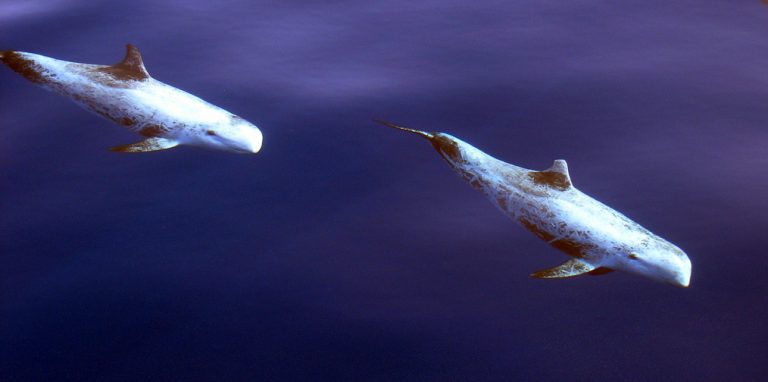Humans use data gathered from past experiences to plan their future actions, but is the same true of marine mammals foraging in the ever-changing conditions encountered in the wild?

The question seems to have been answered by a team of marine biologists, as their analysis of Risso’s dolphins predating on squid indicates that the mammals use data previously collected about their prey to plan each dive in advance.
Risso’s dolphins dive hundreds of metres deep in search of squid shoals, and have a finite time in which to find and consume as much prey as possible before resurfacing to breathe. The squid, once located, can vary constantly in terms of density, depth, and direction and speed of movement.
The researchers, from St Andrews in Scotland, the University of California and Monterey Bay Aquarium Research Institute, chose the waters around Catalina Island off California for their own data-gathering.
Each dolphin would carry out 7-11 dives at a time over a wide depth range, with only a minute or two spent recovering at the surface between dives.
Using a pole, the team attached sound-and-motion recording tags to the dolphins to track not only their depth and movement but also the vocal signals they emitted. At the same time they tracked the movements of the squid shoals using ROV-mounted echo-sounders. Data obtained for 37 dolphin dives was later analysed in the laboratory.
At the start of each dive, the dolphins were found to adjust their echo-location ranges as if already planning to forage at a particular depth based on their previous dive. Once they found a suitably dense layer of prey they reduced their search range to target prey within that area.
On ascent they increased their search range again, indicating that they had already decided to stop foraging in the previous layer and start searching shallower layers. The fact that they continued to echo-locate on ascent indicated that they were planning their foraging strategy for the next dive.
The dolphins also seemed to adjust their planning according to changing conditions, sometimes targeting a shallow layer of squid at the outset, but shifting their attention to deeper, more plentiful concentrations later in the dive.
The findings are published in the Journal of Experimental Biology here
Divernet – The Biggest Online Resource for Scuba Divers
11-Mar-18

